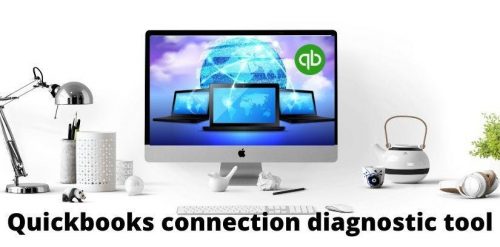Software development techniques and tools change over time. These changes aim to improve quality, productivity, and customer satisfaction, tackle an ever-shorter delivery period, and deliver successful products and services. Automation testing plays an essential role in achieving these objectives. It paves the way for the execution of the functional testing process, ensuring its effectiveness.
Functional testing tools are used to test the functionality of software applications, depending on the software’s requirements. These tools test the quality of the software and its usability and ensure that the software meets customers’ needs. Therefore, selecting an efficient functional testing tool is crucial in software development.
This article will provide a comprehensive overview of the best functional testing tools used in 2024.
What is Functional Testing?
A quality control procedure called functional testing evaluates whether a system yields with given functional needs. This testing method involves black-box testing of functions by examining input and output behavior without considering the internal program structure. Functional testing typically describes the way the system works.
Automation testing in functional testing using specialized cloud tools or frameworks can minimize the time and endeavor required for repetitive testing. It writes programs to mimic user interactions and test the product’s functionality. One such tool that can be used is LambdaTest.
LambdaTest is a comprehensive test orchestration and execution platform that leverages artificial intelligence to facilitate the seamless and efficient running of manual and automated tests on a large scale. Focusing on providing a versatile testing environment, LambdaTest empowers users to conduct both real-time and automated testing across an extensive array of environments, encompassing over 3000 configurations, including browsers and real device cloud.
What Are Functional Testing Tools?
Functional testing tools are software that automates and streamlines the testing of specific functions in a software application. Their main objective is to verify the application-defined requirements, focusing on UI, APIs, security, databases, and overall operational behavior. The tools analyze the software’s quality and functionality, helping developers pinpoint defects or bugs and make it more efficient.
Functional testing tools execute tests that simulate user interactions to guarantee each software function performs as expected. Furthermore, the tools offer numerous benefits, such as enhanced efficiency and precision in testing software applications. They enable complete coverage of all software functionalities, guaranteeing software quality and dependability. By automating repetitive testing tasks, the tools save time and diminish the possibility of human error.
Timely identification of functional discrepancies and bugs is crucial for prompt resolution, which ultimately enhances user experience and minimizes development expenses. Functional testing tools are critical in maintaining top-of-the-line software development and QA processes.
Features of Functional Testing Tools
Functional testing tools are designed to address the elements of a system or software application. The tools ensure that the software performs the features of the established standard, such as:
- Test case management
- Test Scripting
- Test execution and reporting
- Test data management
- GUI testing
- Database testing
- Integration and API testing
- Test environment management
- Performance and load testing
Benefits of Utilizing Functional Testing Tools
To understand the effectiveness of functional testing, developers and testers must comprehend that functional testing:
- Guarantees that software performs adequately for end users or commercial customers, avoiding mistakes and inappropriate functionalities.
- Finds flaws in an app’s functionality and ensures proper operation.
- Discovers and fixes defects and issues to ensure smooth functionality and consolidates security gaps, delivering a flaws-free software product.
- Evaluate software security, ensuring app security for storing sensitive user data and ultimately producing a definitive conclusion.
How to Select the Suited Functional Testing Tools?
Factors that should be taken into account while choosing a functional testing tool are:
- Defect categories
- Programming language and environment
- Team dynamics
- Reports
- Version control and continuous integration
- Tagged and supported platforms
- Setup and test-data management procedures
Functional Testing Tools For 2024
Here is a brief description of a few functional testing tools to showcase their best use case and noteworthy features to give a snapshot of the user interface.
Selenium
Selenium is an open-source, cloud-based functional testing tool for web applications, delivering efficient test automation through its features. The tool supports multiple programming languages, including Python, Ruby, PHP, Java, Perl, Groovy, C#, and more. This allows developers to write test scripts in their preferred software programming languages. Furthermore, Selenium is compatible across diverse platforms, making it an ideal option for functional testing.
A few pivotal features of the Selenium tool are:
- Cross-browser support
- High performance
- Multilingual compatibility
- Improved speed
- Open source
- Dynamic web elements
- Reusability and extras
- Easy identification and use of web elements
- Portability
Selenium offers numerous benefits to developers and testers. Here are a few benefits of Selenium:
- It provides community support for tools and documentation.
- It supports third-party integration like SauceLabs.
- It is an open-source tool for extension and modification.
- Its integration with Selenium Grid supports parallel testing.
- Its language independence unites programming languages.
Apart from the benefits provided by Selenium, there are a few disadvantages too, such as:
- It consumes a high initial time.
- It addresses automation challenges in OS pop-ups, file handling, API tasks, and authentication.
- It needs to be synchronized due to heavy async and AJAX programming usage.
- It is not an all-in-one solution.
- It has low readability of Test Scripts.
Swagger
Swagger is a robust API developer tool that facilitates the API lifecycle for individuals and teams. It delivers commercial tools, open-source resources, and free offerings, allowing users to develop exceptional APIs. SmartBear Software is a leader in software quality tools. They have developed QAComplete, Swagger, and SoapUI. With Swagger, developers can facilitate API development with finesse and confidence.
A few prominent features of the Swagger tool are:
- User interface functions across diverse development environments
- Streamlined API interaction and testing
- Supports different scenarios across major browsers
- Easy access and management of resources
Some paramount pros of the Swagger tool are:
- Free to use
- User-friendly and easy to use
- Open-source and freely available
- Vibrant and active community
- Offers customization options
A few cons of Swagger to consider are:
- Lack of robust developer tools
- Development and quality assurance tools need multiple specifications
- Development and quality assurance tools need multiple specifications
Appium
Appium is an open-source automation testing tool for hybrid, native, mobile web, and desktop applications. Initially designed for Android and iOS mobile applications, the tool has developed into a comprehensive platform with extensive automation capabilities.
Appium’s WebDriver-based protocol extends to diverse desktop and mobile platforms, authorizing developers to efficiently automate their applications. Its cross-platform compatibility and exemplary features make it a robust and efficient automation testing tool.
A few pivotal features of Appium are:
- Free and open-source
- Provides Appium support
- Multiple programming languages support
- Thriving large community
- No need for reinstalling
Below are some prominent benefits of the Appium tool:
- Compatible with multiple platforms
- Supports JSON wire protocol
- Facilitates a cross-platform for native and hybrid mobile applications
- Open-source platform where users can contribute easily
- Does not have any dependency on a mobile device
A few demerits of Appium are:
- Difficulty in locating the elements
- Complex configuration
- Slow speed due to its architecture
- Chances of flaky tests, lack of precision
Katalon Studio
Katalon Studio is an automation testing tool for mobile applications, websites, and web services. It delivers record and playback features, seamless automation capabilities, and a manual mode for non-programmers. The tool also has a script mode for programming experts, authorizing them to craft test scripts in Groovy. Katalon Studio offers numerous features that facilitate precise and efficient automation testing processes.
A few noteworthy features of Katalon Studio are:
- Supports Java and Groovy language
- Offers integration with Git, qTest, Jenkins, and Jira
- Free tool developed by KMS technology
- Provides in-built templates for maintaining test cases, custom keywords, and object repository
- Suitable for automating web and mobile applications
- Provides record and playback capability
A few pros of Katalon Studio are:
- Features intuitive analytics
- Provides an extensive range of handy integrations
- Offers appealing UI graphics
- Supports various types of testing
- Simple for both installation and usage
- Available as a free version
Some noteworthy cons of Katalon Studio are:
- Mobile testing can be time-consuming
- Limited support for scripting languages
- Closed source code, limited customization
- Supported by a smaller community
SoapUI
SoapUI is an open-source app that tests web services utilizing Simple Object Access Protocol (SOAP) and representational state transfers. It delivers a comprehensive solution for invoking, inspection, development, mocking, compliance testing, load, simulation, and functional testing. This powerful toolkit helps developers and QA experts validate and optimize web service functionality, performance, and compliance, guaranteeing steadfast and high-performing applications.
A few prominent features of SoapUI are:
- Load testing using loadUI
- Ideal for functional testing
- Intuitive and user-friendly
- Offers robust security and vulnerability testing
- Provides extensive assertions
- Service simulation
- Facilitates data-driven testing
- Supports automation through Groovy scripting
Some of the significant pros of SoapUI are:
- Simplifies debugging process
- Conducts complex simulations
- Enables access to multiple APIs
- Boasts user-friendly interface
Some cons of SoapUI are:
- Impaired user interface
- Lack of autosave feature
Cypress
Cypress is an avant-garde front-end testing tool for web applications, delivering seamless compatibility across significant operating systems, such as macOS, Linux, and Windows. As a cloud-based open-source software under the MIT License, the tool is committed to collaboration and transparency within the development community. Cypress Cloud delivers innovative solutions for testing capabilities. This makes the tool an invaluable tool for high-quality web app testing.
Pivotal features of Cypress are:
- Captures test snapshots
- Prevents async issues
- Easily debug tests
- Detects unreliable tests
- The architecture delivers fast, flake-free, reliable tests
- Manages network traffic without server dependency
Prominent pros of Cypress are:
- Waits for automatic commands and assertions
- Developers or quality assurance experts can use Clocks, Spies, and Stubs to verify server responses
- Supports Firefox and Edge browsers
- Captures snapshots during test execution
- Offers excellent documentation
Cons of Cypress to consider are:
- Limited cross-browser support
- Can not drive two browsers at the same time
- Can not test cross-domains
Postman
Postman is an outstanding API platform that facilitates the creation and utilization of APIs, accelerates development processes, and optimizes efficiency. Its intuitive interface and robust features allow developers to swiftly and precisely create better APIs. Postman offers its flagship solution without cost to independent developers and small teams. Postman Pro and enterprise tiers deliver comprehensive API management, extended support, team collaboration, and other advanced features. With Postman, QAs can revolutionize the way they design and manage APIs.
Prominent features of Postman are:
- Inherent GraphQL support
- Comprehensive level information
- Excellent documentation capabilities
- Collaborative features
- Regression testing monitoring functionality
- Postman visualizer for enhanced visualization
Noteworthy pros of Postman are:
- Simple yet highly user-friendly interface
- Offers support for all possible HTTP methods
- Users can seamlessly access their files
Cons of Postman are:
- The steep learning curve for beginners
- Difficulty in collaboration with the team
- Issues in maintaining and updating API
Conclusion
Functional testing is crucial to ensure improved and consistent functionality of the apps, including links, media functions, and forms precisely for the end user. Selecting the right tool is paramount to improving the efficiency and quality of the application lifecycle. Therefore, functional testing ensures the software, websites, and mobile applications meet stringent requirements.
Read More: Extending Playwright: Writing Custom Plugins And Extensions









